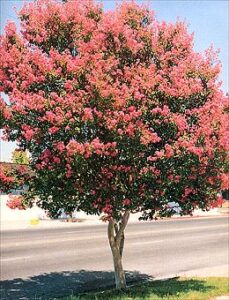In the last 43 years that I have been involved in the landscape/green industry endeavor, I have witnessed many changes. Most of these changes have been beneficial. However, some landscapers and homeowners have not changed and seem to be in a rut.
MISTAKE NO. 1. Transplanting shrubs and trees too deep. Never pile soil on the top of the root ball. This causes stress and/or a slow and agonizing death to the plant. I use the term “agonizing” loosely, however, how would you feel if you were put in a situation where your oxygen was diminished and carbon dioxide begin to build up in your lungs? This is what happens when you seal the soil surface above the newly transplanted root ball.
MISTAKE NO. 2. Piling too much mulch over top of root systems. This mistake is the same as mistake no. 1. I remember I used to enjoy making extra income by replacing dead trees following other landscaper’s projects (plant warranties that expired) with live ones from my nursery farm. Not all the fault is to be blamed on the landscaper, but the landscape maintenance crews in applying too much pine and hardwood mulch. The observable symptoms would be stunted growth, yellowing of all leaves and insect damage at the base of the trunk. The final “coup de grace” is the tree falling over with a very shallow supporting root system during a mild wind storm.
MISTAKE NO. 3. Applying pre-emergent herbicides on lawns after dogwood flowering time (April and May). Some pre-emergent herbicides will severely injure emerging tender turf roots at this time. The chemical companies call this root pruning. Ho ! Ho! Stand systems are smaller leaf blades and yellowing. The host sign is stubby roots, the same sign as root knot nematode infestation. Turf growing on clayey soils may have more tolerance to the pre-emergent herbicide injury than turf growing on sandy soils.
MISTAKE NO. 4. Applying turf fertilizer with pre-emergent herbicide combined (included). This practice can be counterproductive. Yes, the information on the bag states, “apply in January through early March to prevent germination of annual weeds–. However this is the wrong time of year to apply the fertilizer. The fertilizer will cause the turf to come out of dormancy prematurely and be damaged or worse killed by winter low temperatures. Additionally, the nitrogen in the fertilizer will be leached below the reach of the young emerging turf roots. I love these combo products, because homeowners would overlap their application passes and cause herbicide burns, killing their turf. I specialized in re-sodding. Good business. You can over fertilize and usually the turf will recover, but if you over herbicide your turf can be killed. If the homeowner applies the fertilizer after April 15 when Clemson University recommends, what about the pre-emerge herbicide being applied at this time when the tender young turf roots are developing in the soil? Root injury and stress.
MISTAKE NO. 5. Applying little or no rock aggregate as a base when installing patio pavers. Four to six inches of No. 57 granite gravel with fines should be installed and packed and covered with 1 inch of patio sand before the pavers are laid. If you have various thickness’s of base material, you will have various levels of patio surface.
MISTAKE NO. 6. Installing deck floor boards with the tree growth rings beginning and ending on top side of boards. This will cause a condition known as cupping when rain water seeps in between the annual growth rings.
 MISTAKE NO. 7 A continuing practice of cutting crape myrtle trees back to chest high in late winter. This is known as crape murder. You will notice that I used the word “continuing”. It is permissible in the tree nursery industry to prune in this manner 1 time on container grown crape myrtles to cause more branching. This is known as “posting”. Continuing crape murder will stress crape myrtle trees and shorten their life spans.
MISTAKE NO. 7 A continuing practice of cutting crape myrtle trees back to chest high in late winter. This is known as crape murder. You will notice that I used the word “continuing”. It is permissible in the tree nursery industry to prune in this manner 1 time on container grown crape myrtles to cause more branching. This is known as “posting”. Continuing crape murder will stress crape myrtle trees and shorten their life spans.





